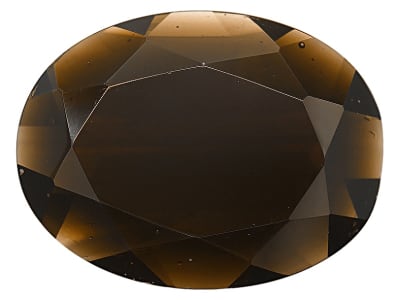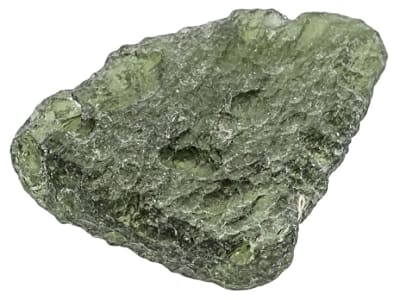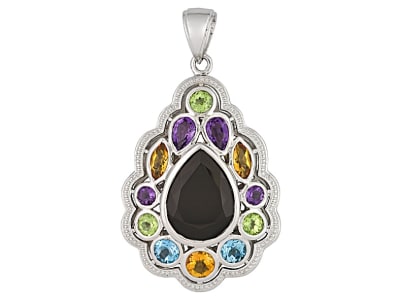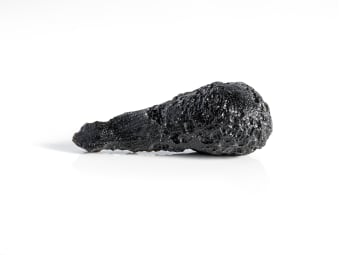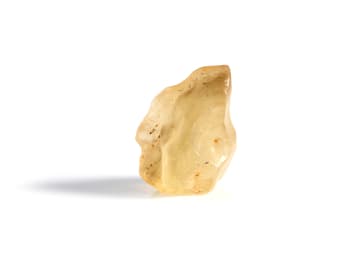Tektites are unique in that they form when a meteorite melts the surface of the Earth where contact is made. The heat of impact results in molten rock and sand being tossed into the air, raining back down as a natural glass. Tektites are named for the locations where they are found, i.e., moldavite is from the Moldau river area of the Czech Republic. Common colors of this natural glass are yellow, green, gray to black, and colorless.
General Information
LWUV: Inert
Tektite Colors
-
 Black
Black -
 Brown
Brown -
 Green
Green -
 Yellow
Yellow
Alternate Names
Moldavite; Indochinites; Georgiaites; Australites; Bediasites; Philippinites; Ivorites
Countries of Origin
Tanzania, United Republic Of; Viet Nam; Unknown; Czechia; China; Philippines; United States of America; Egypt; Australia; Kazakhstan; Thailand; Libya
Care
Normal care
Species/Variety
Indochinite
Indochinites are dark black or brown and they are often found as plates or discs, but they take on tear drop to dumbbell shaped forms as well. They come from Southeast Asia also known as the Indochinese Peninsula. They have been found at sites in Cambodia, China, Laos, Thailand, and Vietnam. Some have argued that they were created 700,000 years ago and it has been suggested they were formed by a head-on impact with a widely spread object, such as a comet, or an unknown event that produced a nuclear or electrical phenomenon. The largest indochinites are the Muong-Nong type which have a layered structure.
Libyan Desert Glass
This naturally forming glass is found in the Western Desert of Egypt. Although it was only discovered by the scientific community in 1932, we know of Libyan desert glass being used for ornamentation as far back as Ancient Egypt. Its origin is disputed, as some believe it is a tektite, like moldavite, formed from a meteor impact. Others believe it formed from the aerial explosion of a meteorite that did not make impact. It is pale yellow to greenish yellow in color and the main component is Lechatelierite which is a pure silica glass.
